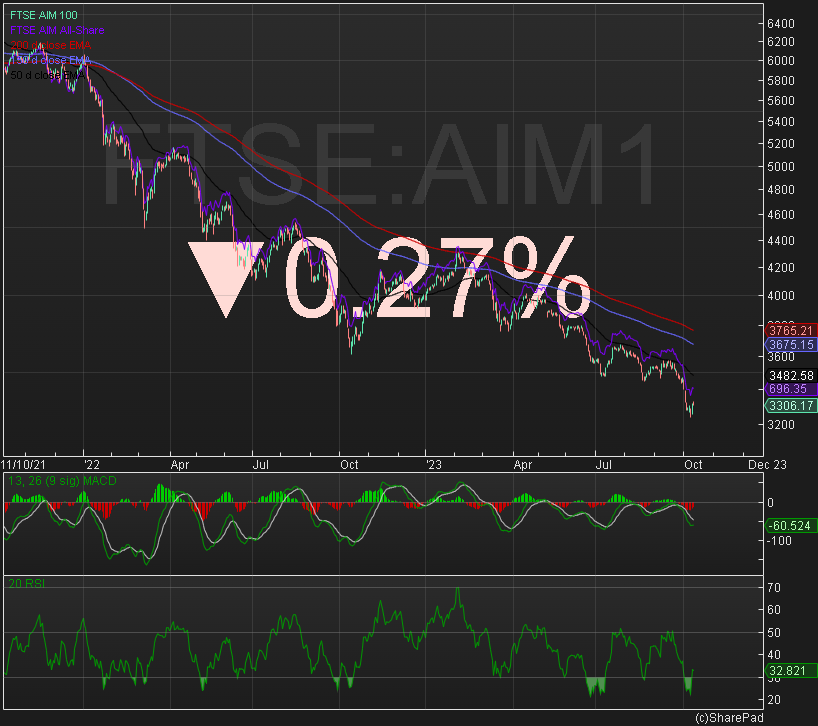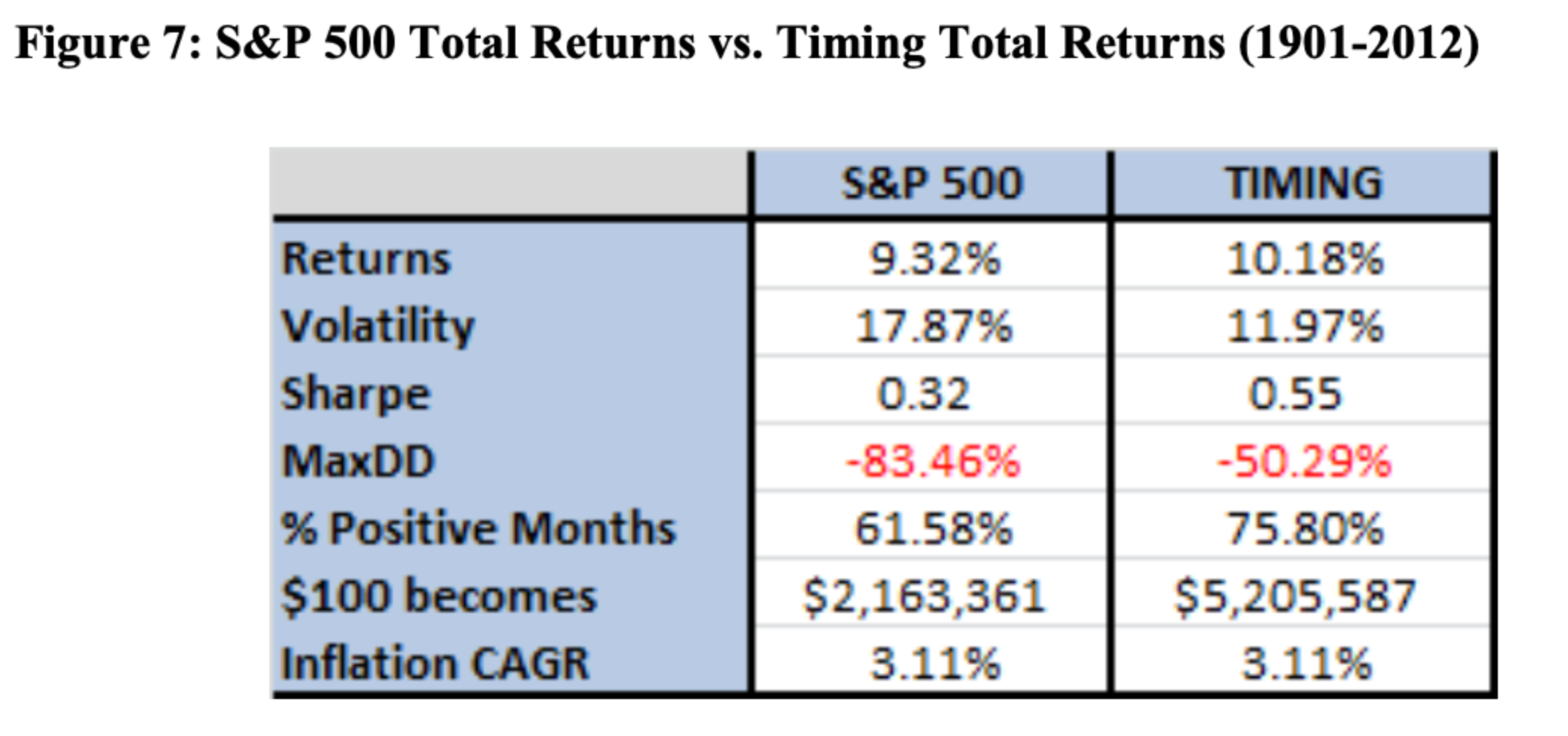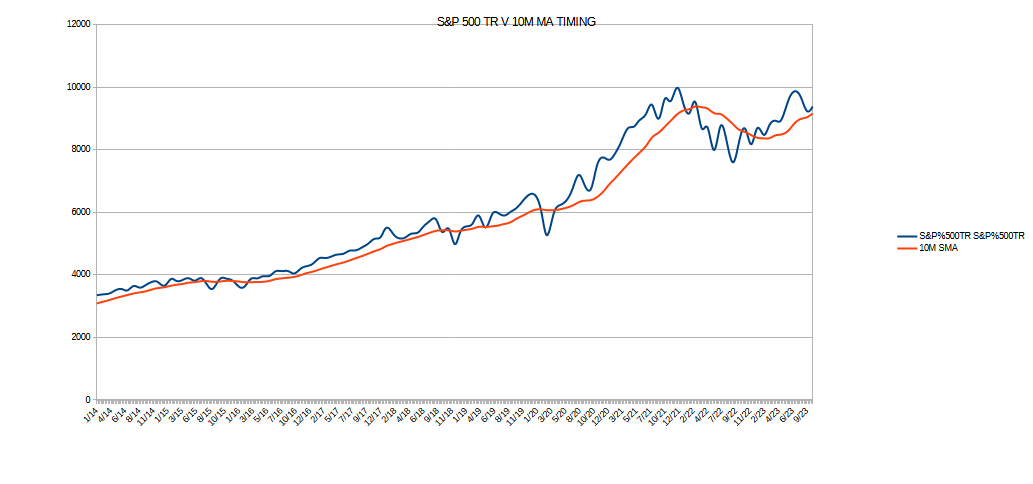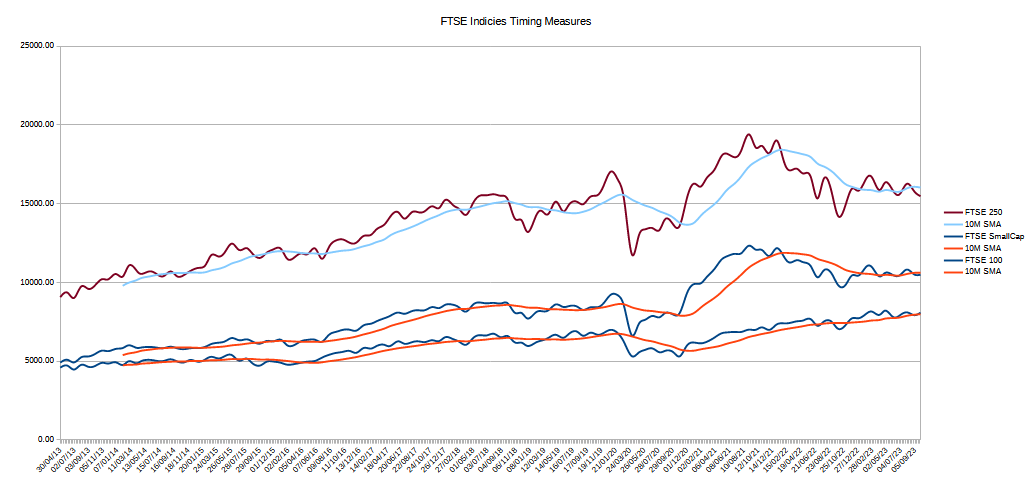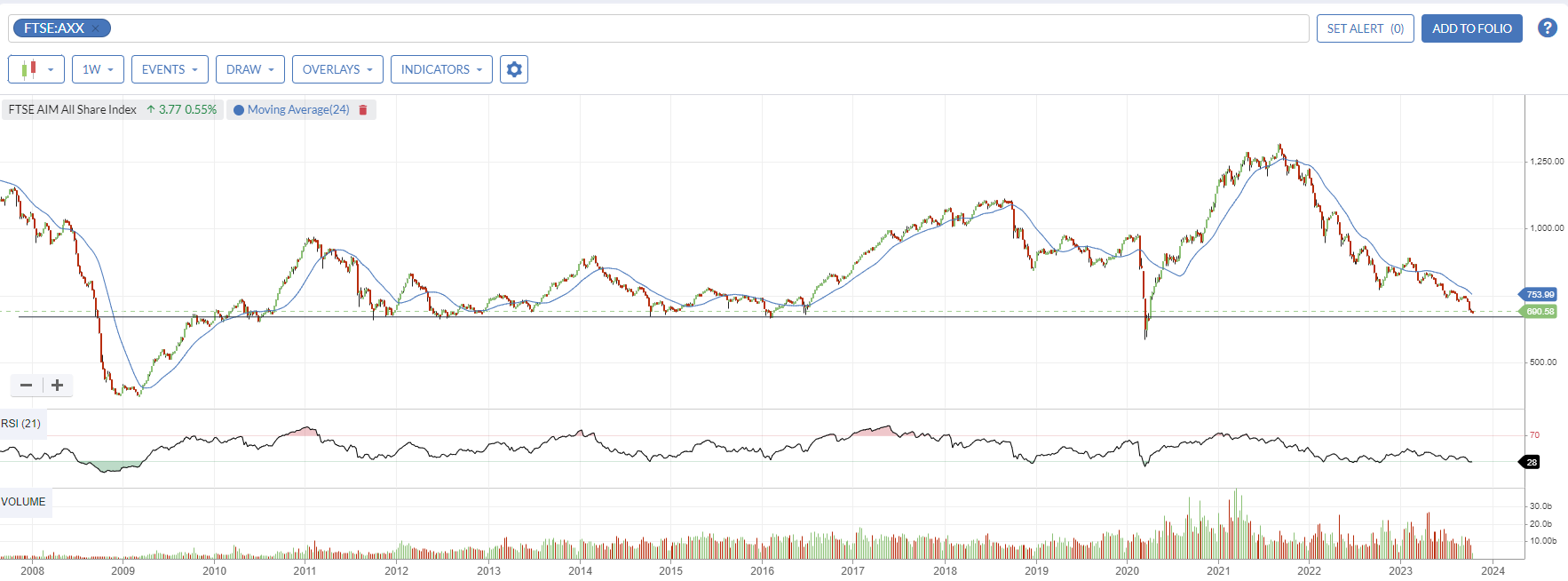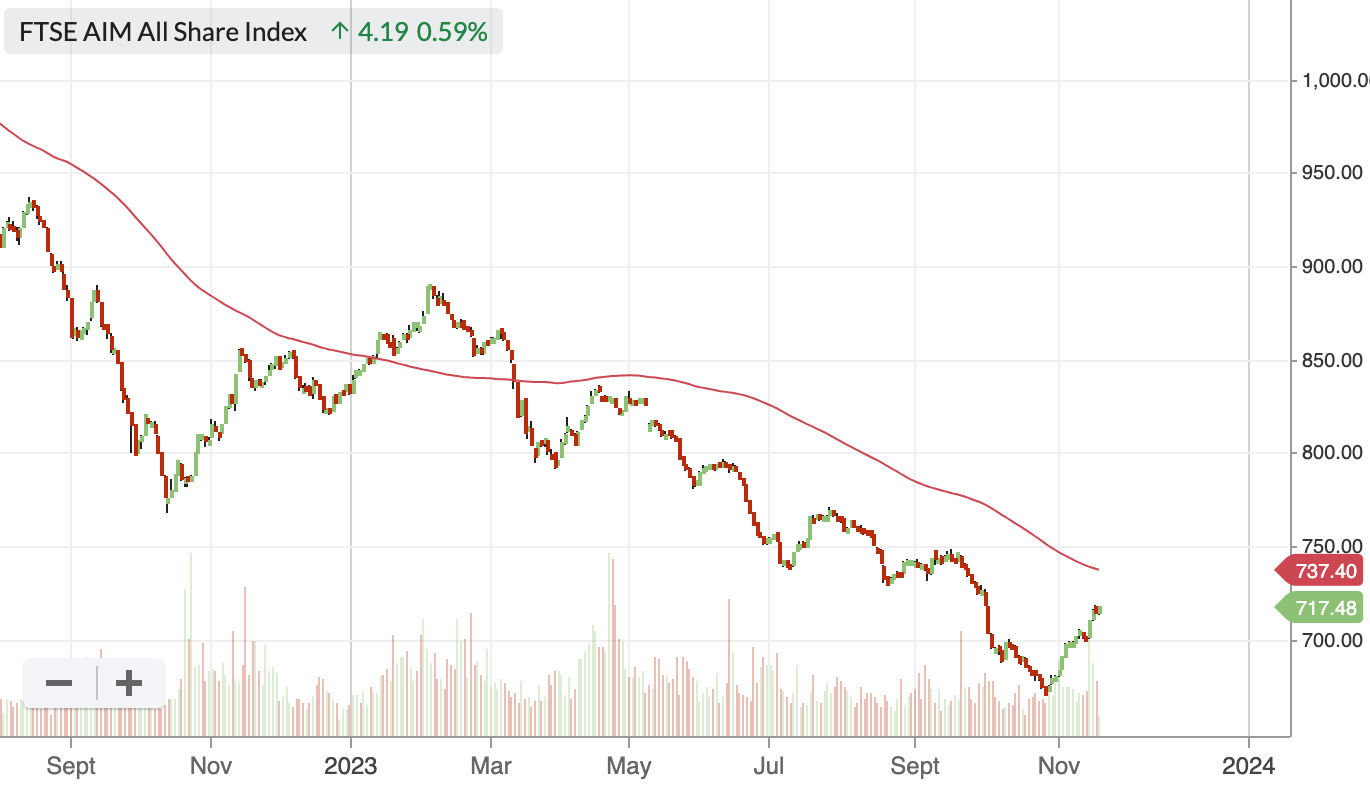The FTSE AIM All Share has been suffering an extreme October sell off. It’s in an almost unbroken 25 month downtrend and appears to be entering a capitulation phase. Is now the time to buy AIM Shares?
It’s easier to make gains on shares when investing when the tide is rising, rather than falling, but if you can pick up shares at the point of maximum pessimism, gains can be dramatic, especially among small caps.
Let’s have a look at two approaches that can answer the question of when to get back in?
1. Trend following - wait for a confirmed change in trend
The first approach is to follow changes in trend using a simple moving-average crossover. The idea is to wait until the index moves above its medium-term moving average, and then buy. Similarly, you sell and move to cash when it moves below. The 120 or 200 day moving average (MA) have been fruitful for timing AIM for the last few decades, and I’ve written about this several times throughout the year (here and here).
As the index is still well below its 120-day MA, it’s waiting on a buy trigger. I have to admit that I watch this indicator like a hawk.
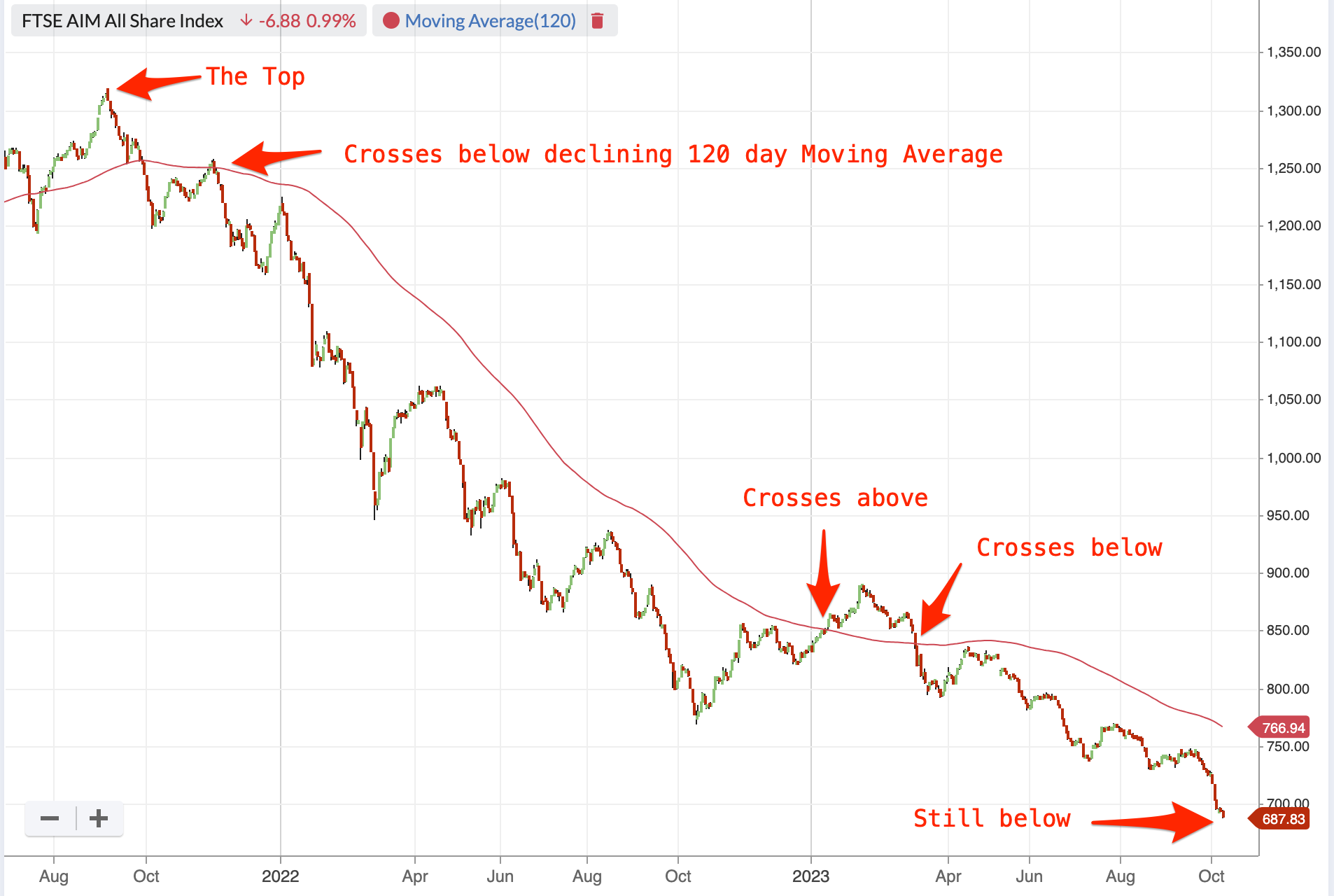
One portfolio I’m investing from scratch is using this trend-following approach to gradually deploy capital. The first trigger to invest was in January when the AIM index moved above its 120-day moving average. The plan was to invest a third of the capital on that trigger, then wait for confirmation of a continued uptrend. The six shares I bought in January have returned 25% on a price appreciation basis and yield 3.5%. Two of the six were AIM shares which have driven the lion’s share of the gains - Yu Group and Kitwave.
Maybe it was a lucky set, but the shares were selected due to their strong value and momentum characteristics at the time (the highest VM Rank shares across different sectors). The trend soon turned down again, so I’ve patiently waited on additional deployment since.
While the MA trend following approach is the safest approach, it does mean you enter the market slowly and can miss the initial gains from any lows.
2. Counter-trend punch - swing trading the lows
The second approach is to try to identify the swing…





